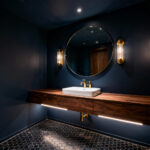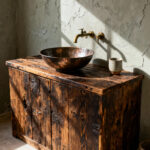Do you ever walk into a bedroom and instantly feel at ease, like you could sink into the soft bedding and drift off to sleep? The secret behind these cozy, inviting spaces often lies in the paint colors on the walls. As a passionate landscaper and home decor enthusiast, I know firsthand how the right paint color can transform a bedroom into a true sanctuary.
Color has a powerful effect on our moods and emotions. Warmer tones like reds, oranges, and yellows can energize and stimulate, while cooler shades of blue and green promote a sense of calm and relaxation. By carefully selecting paint colors that align with the atmosphere you want to create, you can turn your bedroom into a haven of comfort and rejuvenation.
In this comprehensive guide, I’ll share the top 10 best paint colors to help you craft a warm and inviting bedroom. We’ll explore the science behind color psychology, discuss various paint finishes, and provide tips on incorporating complementary design elements. Whether you’re a homeowner looking to refresh your space or a renovator seeking inspiration, this article will equip you with the knowledge to transform your bedroom into a cozy retreat.

Warm Paint Color Palettes for Bedrooms
When creating a cozy and welcoming bedroom, warm paint color palettes are a game-changer. These hues have the power to instantly evoke feelings of comfort and relaxation, making them the perfect choice for your sanctuary.
The beauty of warm colors lies in their ability to add depth and richness to a space. Think earthy tones like terracotta, deep burgundy, and mustard yellow – these shades exude a sense of warmth and sophistication that can elevate the ambiance of your bedroom. Jewel tones, such as rich plum and forest green, also fall under the warm color category and can lend a touch of luxury to your design.
But warm colors aren’t limited to bold and dramatic choices. Softer, muted palettes like dusty rose, apricot, and pale peach can effectively cultivate a cozy atmosphere. These more subdued tones can help create a soothing and serene environment, perfect for winding down after a long day.
To incorporate warm colors into your bedroom, consider using them as an accent wall or throughout the entire space. Pair them with natural textures like wood, stone, and linen to enhance the inviting feel. Layering in soft, plush textiles like velvet or flannel can amplify the cozy factor.
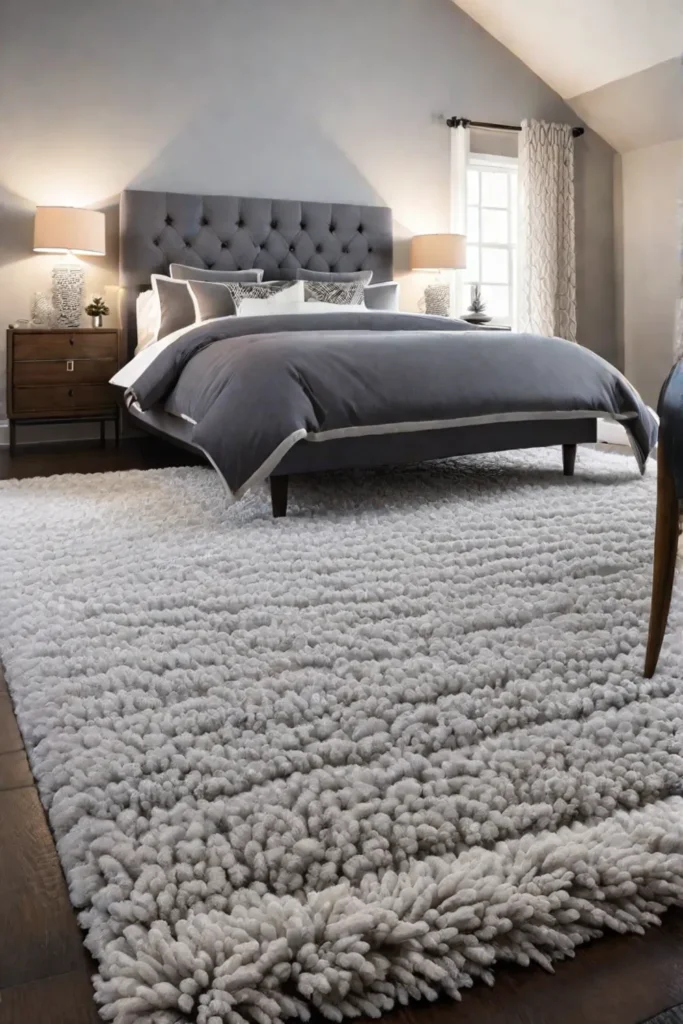
Remember, striking a balance is the key to using warm colors successfully. Avoid overwhelming the room by using too many intense shades. Instead, mix and match complementary hues to achieve a harmonious and visually appealing design.
Calming and Relaxing Paint Colors for Bedrooms
While warm colors can create a cozy atmosphere, sometimes you may opt for a more serene vibe in your bedroom. That’s where calming and relaxing paint colors come into play.
Soft blues, soothing greens, and warm neutrals promote a sense of calm and restfulness. These hues have been shown to positively impact our mood and well-being, helping to lower stress levels and encourage better sleep.
Imagine stepping into a bedroom painted in soft powder blue—the color instantly evokes feelings of clear skies and calm seas. Or picture a space adorned in sage green, muted tones reminiscent of a lush forest. These calming shades can transform your bedroom into a true oasis of relaxation.
Warm neutrals like dove gray and beige can also contribute to a serene atmosphere. While they may not be as bold as vibrant blues or greens, these colors provide a soothing backdrop that allows other design elements to shine.
Consider pairing them with natural textures and materials when incorporating calming paint colors into your bedroom. For example, a soft blue wall could be paired with crisp white bedding and a natural wood headboard for a harmonious, spa-like feel. Or a sage green accent wall could be complemented by linen curtains and a plush area rug.
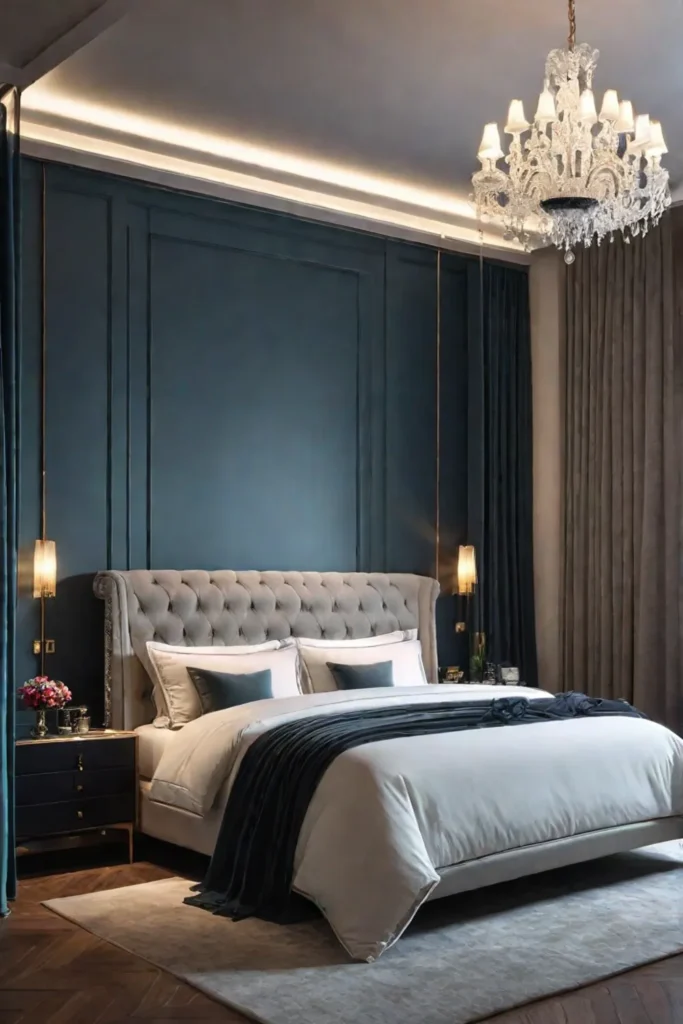
Remember, the key to creating a relaxing bedroom is to balance the paint color and the other design elements. By carefully selecting and applying these calming hues, you can transform your bedroom into a haven of serenity and rest.
Cozy and Inviting Bedroom Paint Colors
Sometimes, you want your bedroom to feel more than calm and serene—you want it to be truly cozy and inviting. Warm, rich paint colors can work their magic here, enveloping you in a sense of comfort and belonging.
Imagine walking into a bedroom painted in a deep, velvety plum – the color instantly radiates a feeling of luxury and sophistication. Or picture a space adorned in a soft, creamy beige, with its warm undertones creating a welcoming and comforting atmosphere.
These cozy and inviting paint colors often include warm neutrals, rich jewel tones, and muted pastels. They can transform a bedroom into a sanctuary where you can unwind and relax.
When selecting cozy paint colors, consider how they will interact with the other design elements in the space. Pair a deep forest green with natural wood accents and plush textiles for a cozy, rustic vibe. Or opt for a soft, peachy hue and complement it with delicate floral patterns and airy, lightweight fabrics.
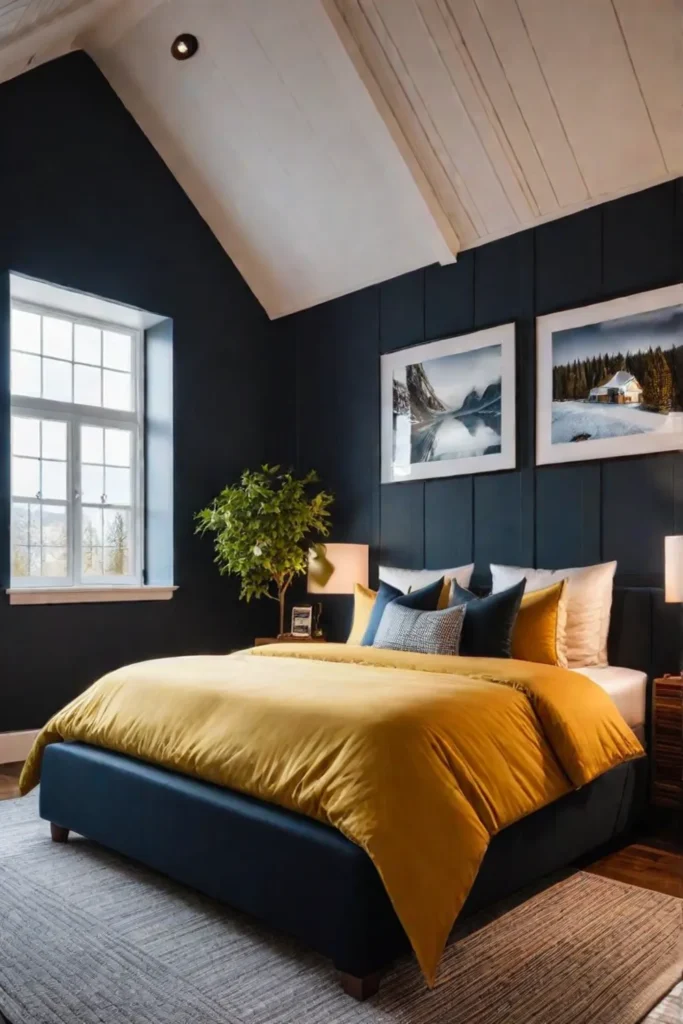
Remember, the key to creating a cozy and inviting bedroom is to balance the paint color and the overall design. Avoid overwhelming the space with too many bold or intense shades. Instead, focus on layering different textures, patterns, and lighting sources to enhance the warm and welcoming atmosphere.
By embracing these cozy and inviting paint colors, you can turn your bedroom into a true oasis of comfort – a space where you can escape the day’s stresses and indulge in the ultimate relaxation.
Versatile Neutral Paint Colors for Bedrooms
While warm, cozy, and calming paint colors can create an inviting atmosphere in the bedroom, sometimes you may want a more versatile and adaptable foundation for your design. That’s where neutral paint colors come into play.
Neutral shades, such as warm grays, soft beiges, and off-whites, offer a blank canvas that can accommodate various design styles and color schemes. These timeless hues provide a cohesive and harmonious backdrop, allowing you to easily incorporate different textures, patterns, and accent colors to personalize your space.
With their subtle yellow undertones, warm grays can add depth and richness to a room without being too overwhelming. Soft beiges offer a calming and tranquil base that can create a serene and relaxing atmosphere. Off-whites, slightly different from pure white, can lend a cozy and inviting feel to a bedroom.
One key benefit of using neutral paint colors in the bedroom is their ability to adapt to changing design trends and personal preferences. If you decide to switch up your decor in the future, these versatile shades will seamlessly integrate with your new style, making it easy to refresh your space without a complete overhaul.
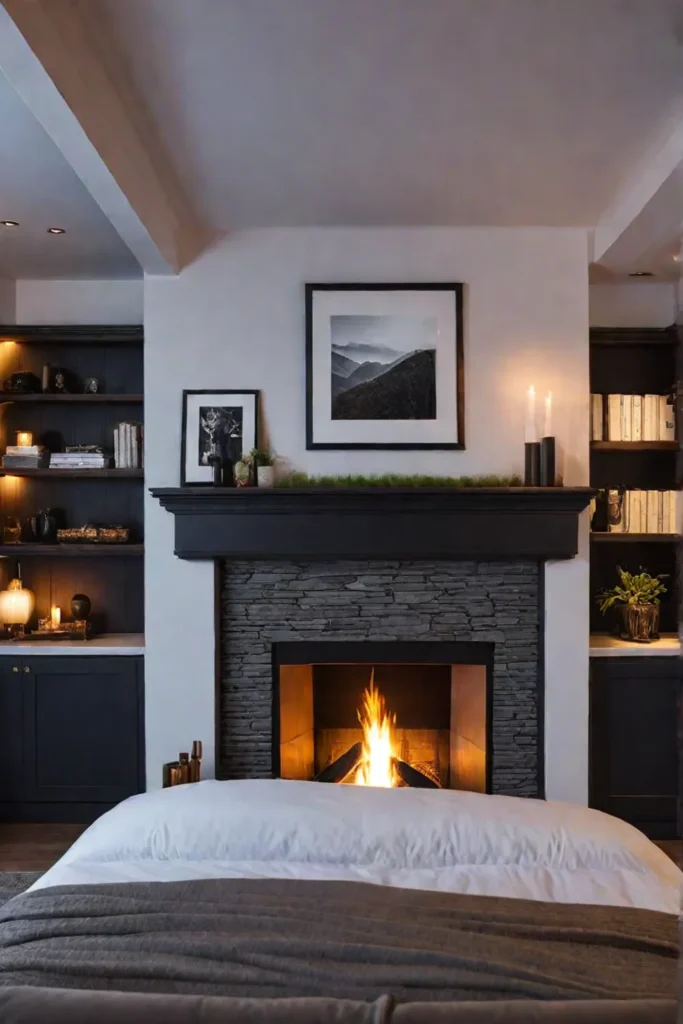
To make the most of neutral paint colors in your bedroom, consider layering different textures and incorporating pops of color through your bedding, artwork, and accessories. This will help prevent the space from feeling too stark or one-dimensional while maintaining a cohesive and visually appealing design.
Whether you opt for a warm gray, a soft beige, or an off-white, neutral paint colors can provide a solid foundation for creating a timeless bedroom tailored to your taste.
Choosing the Right Paint Finish for Bedrooms
When transforming your bedroom into a cozy and inviting retreat, the choice of paint finish can significantly impact the overall look and feel of the space. From matte to high-gloss, each finish offers unique characteristics that can enhance or detract from the desired atmosphere.
With their low sheen and non-reflective properties, Matte finishes can add a sense of calmness and intimacy to a bedroom. These finishes are ideal for walls, as they absorb light and create a soft, velvety appearance that can contribute to a cozy ambiance.
On the other hand, Eggshell finishes have a slightly higher sheen than matte, making them suitable for both walls and trim. They offer good coverage and are easy to clean, making them a practical choice for high-traffic areas like door frames and baseboards.
Satin finishes provide a subtle shine that adds depth and texture to a room without being overpowering. These finishes work well on doors, windows, and moldings, as they are highly durable and resistant to wear and tear.
For a more glossy and reflective look, semi-gloss or high-gloss finishes may be the way to go. These finishes can enhance the visual appeal of accent pieces or architectural details, creating a bold and eye-catching focal point.

When selecting the right paint finish for your bedroom, consider the overall design style, the amount of natural light in the room, and your preferences. Matte finishes can create a cozy and intimate atmosphere, while glossier options may be better suited for a more modern or traditional aesthetic.
Remember, the key to achieving the perfect balance is to experiment with different finishes and observe how they interact with the other design elements in your bedroom. By carefully considering the paint finish, you can elevate your personal sanctuary’s overall look and feel.
Incorporating Accent Colors in the Bedroom
While a cohesive and harmonious color scheme is essential for creating a warm and inviting bedroom, the strategic use of accent colors can add depth, contrast, and visual interest to the space.
Accent colors serve as complementary elements that help break up the monotony of a single dominant hue. By thoughtfully incorporating pops of color, you can inject personality and energy into your bedroom design.
The psychology behind accent colors is fascinating. Certain hues, like rich blues or vibrant reds, can evoke specific emotional responses and set the desired mood for your retreat. For example, a bold navy accent wall can lend a sense of sophistication and elegance, while a cheerful yellow throw pillow can instantly brighten the space and lift your spirits.
Historically, accent colors have been used in bedroom design to highlight architectural features or draw the eye to specific design elements. In Victorian-era homes, for instance, dark wood accents were often paired with soft pastel walls to create a warm and inviting ambiance.
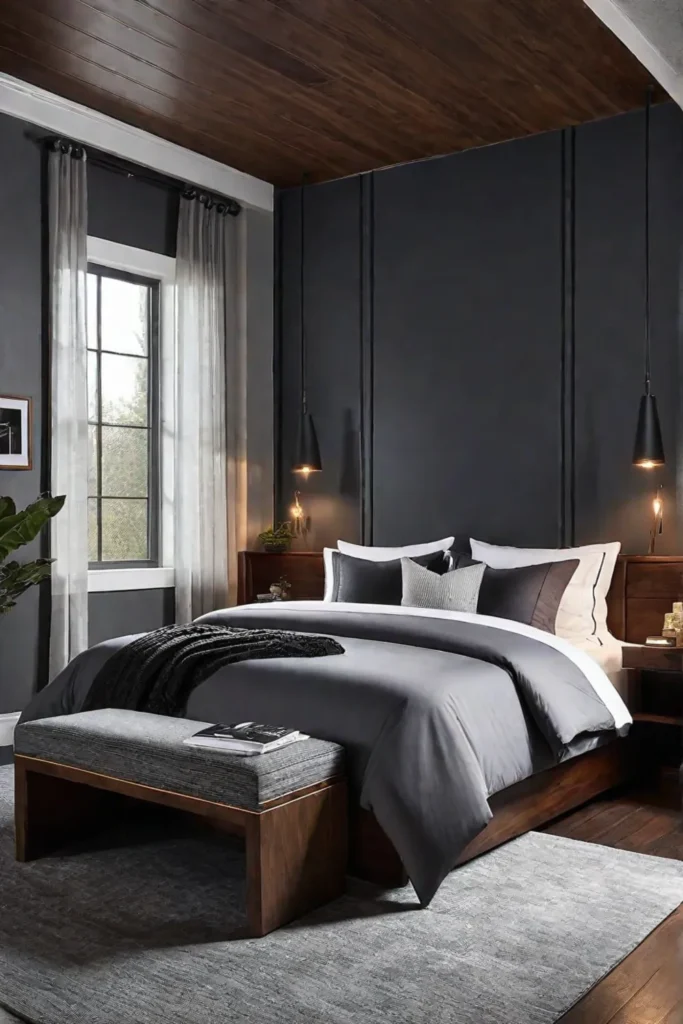
Today, designers continue experimenting with accent colors, blending traditional and contemporary techniques to achieve visually dynamic and personalized spaces. By carefully selecting and incorporating accent colors, you can transform your bedroom into a reflection of your unique style and personality.
To incorporate accent colors effectively, consider pairing them with neutral tones like white, gray, or beige. This balance can prevent the space from feeling overwhelming or disjointed. Additionally, please pay attention to the scale and proportion of your accent pieces, ensuring they complement the overall design without dominating the room.
Whether you opt for a moody navy, a vibrant emerald, or a rich charcoal, using accent colors can elevate your bedroom’s design and create a truly inviting and personalized retreat.
Lighting Considerations for Warm and Cozy Bedrooms
Lighting is crucial in creating a warm and cozy atmosphere in the bedroom. The right lighting can not only complement your carefully selected paint colors but also profoundly impact the overall mood and relaxation levels of the space.
Historically, lighting has cultivated a sense of intimacy and comfort in traditional bedroom designs. From the soft glow of candles to the warm tones of incandescent bulbs, lighting has long been crucial in crafting a welcoming and inviting environment.
Today, with advancements in technology and design, we have a wealth of lighting options at our disposal. By understanding the psychological impact of warm lighting on our mood and relaxation, we can strategically incorporate various lighting sources to enhance the coziness of our bedrooms.
Consider combining overhead, task, and accent lighting to create a visually interesting and relaxing space. Dimmable overhead lights, for instance, allow you to adjust the brightness levels to suit your needs, whether you’re winding down for the night or enjoying a cozy reading session.
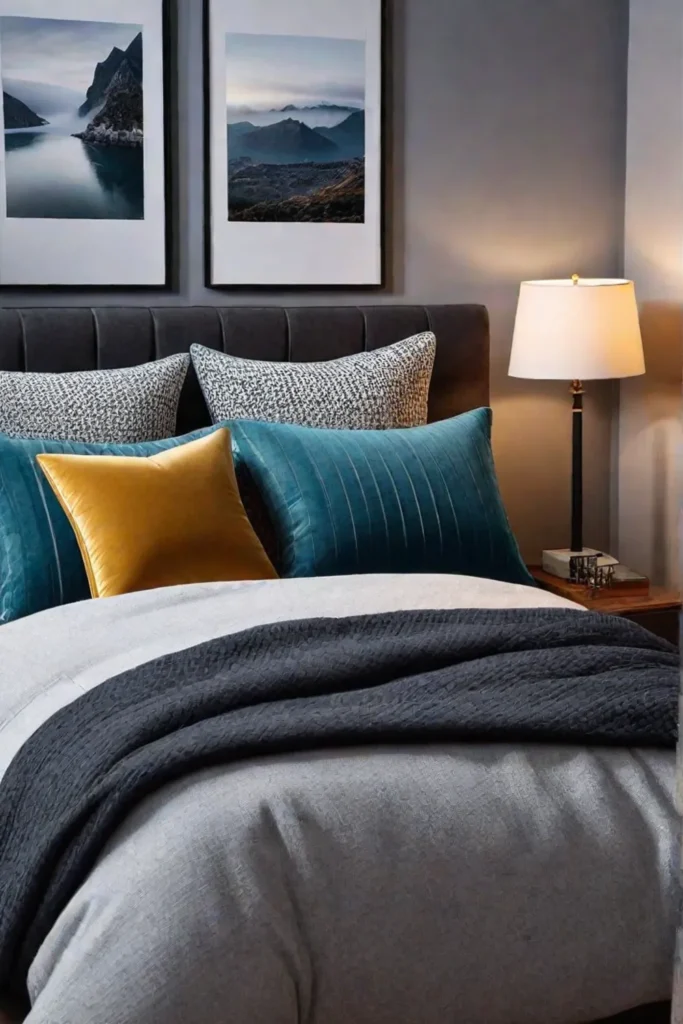
Task lighting, such as bedside lamps or sconces, can provide focused illumination in key areas, ensuring adequate visibility without compromising the overall ambiance. Accent lighting, however, can highlight architectural features or artwork, adding depth and character to the room.
When selecting lighting fixtures and bulbs, opt for warm color temperatures, typically around 2700 Kelvin. These warmer tones can help create a cozy and inviting atmosphere, complementing the paint colors you’ve chosen for your bedroom.
By layering and balancing different lighting sources, you can achieve a harmonious and visually appealing design that enhances your personal retreat’s overall warmth and coziness.
Incorporating Textiles and Accessories for a Cozy Bedroom
To truly elevate the warmth and coziness of your bedroom, consider the role of textiles and accessories. These design elements can work with your carefully selected paint colors to create a cohesive and inviting space.
Textiles, such as bedding, curtains, and area rugs, play a significant part in establishing a bedroom’s overall tactile and visual experience. Soft, plush fabrics like velvet, flannel, or even chunky knit throws can instantly add comfort and luxury to the space.
Accessories, however, serve as personal touches that inject character and individuality into the room. Throw pillows, decorative blankets, and artfully placed artwork can all contribute to the cozy and inviting atmosphere you’re striving to create.
Historically, textiles and accessories have been integral to traditional bedroom design. From the ornate tapestries of medieval castles to the delicate lace trim of Victorian-era furnishings, these design elements have long been used to enhance the warmth and comfort of the bedroom.
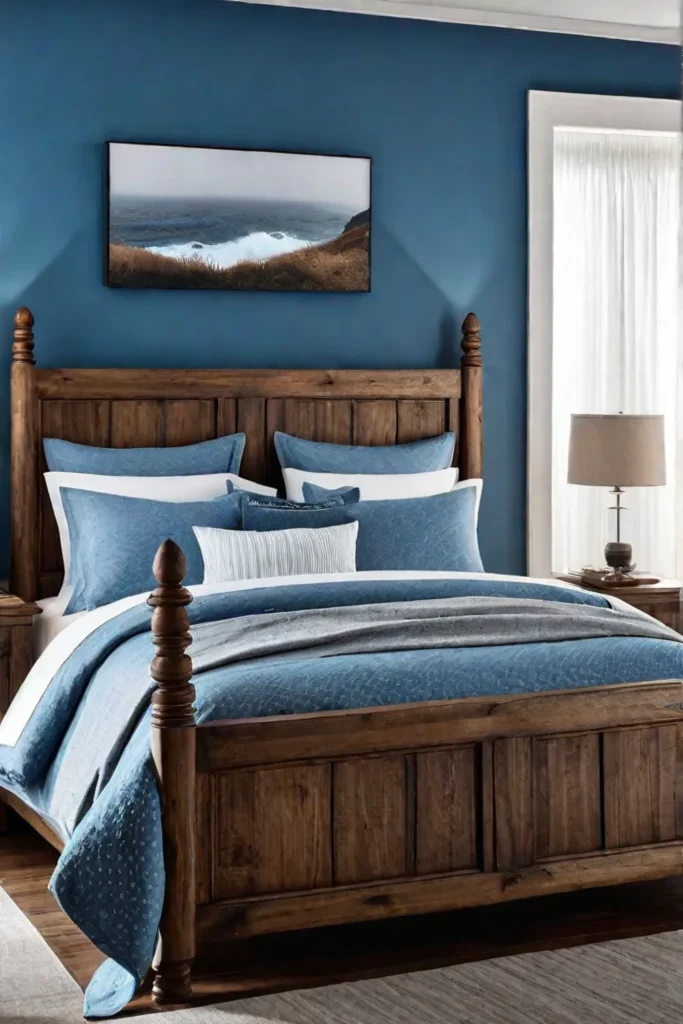
Today, the psychological impact of textiles and accessories on our mood and relaxation is well-documented. Studies have shown that exposure to soft, cozy fabrics and soothing color palettes can be calming, helping lower stress levels and promote better sleep.
To incorporate textiles and accessories effectively in your cozy bedroom, consider layering different elements to create depth and visual interest. Mix and match complementary patterns, textures, and hues to achieve a harmonious and personalized look.
By thoughtfully selecting and arranging these design elements, you can elevate your bedroom’s overall warmth and inviting atmosphere, transforming it into a true sanctuary where you can unwind and recharge.
Conclusion
This comprehensive guide explores the top 10 best paint colors to help you create a warm and inviting bedroom environment. From rich, earthy tones to soothing neutrals, each of these hues can transform your retreat into a cozy oasis of comfort and relaxation.
By understanding the principles of color psychology and the historical significance of various paint finishes, you can make informed decisions that align with your design preferences and lifestyle needs. Whether you’re drawn to a deep plum’s enveloping warmth or a soft blue’s calming serenity, the right paint color can set the tone for your entire bedroom.

Remember, the key to achieving a cozy and inviting atmosphere lies in the paint color and the careful selection and coordination of complementary design elements. Each component, from textiles and accessories to strategic lighting, is crucial in creating a cohesive and visually appealing space.
So, take the time to explore the options, experiment with different combinations, and trust your instincts. With a little creativity and attention to detail, you can turn your bedroom into a haven that reflects your style and provides the ultimate respite from the outside world.
Ready to embark on your cozy bedroom transformation? Start by choosing your favorite paint color from our top 10 list, and let the creation of your dream space begin!




